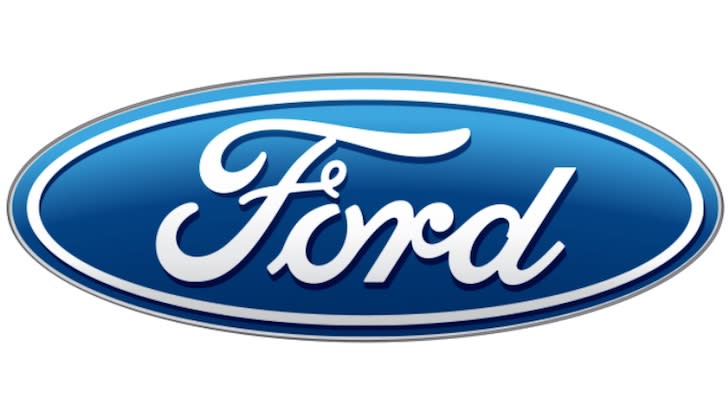3 Sideways Stocks That Aren’t Worth Your Time or Effort
Stocks go up and down. Its what they do.
Traders focus on the near-term movements. Is stock X going higher today? Is stock Y going lower tomorrow? Those are hard questions to answer. Indeed, you might have better luck going to Vegas and betting on March Madness (maybe not this year… thanks, UMBC).
Investors, though, focus on the long-term movements. That is much easier to do. Is stock X going higher over the next 5 years? Is stock Y going lower over the next 5 years? Those are much easier questions to answer.
InvestorPlace - Stock Market News, Stock Advice & Trading Tips
Therefore, when I’m looking for investment opportunities, I look at the big picture. What is going to happen over the next 5-plus years to this company? And, perhaps more importantly, is the stock priced for that big picture outlook?
Not every stock is going to a be a winner using the long-term approach. Indeed, there are some stocks which will go up and down over the next several years as all stocks do, but the net gain will be close to the flat-line. I call these “sideways stocks”.
Below is a list of 3 sideways stocks which I think aren’t worth your time or effort. These stocks, given an unfavorable discrepancy between valuation and long-term growth prospects, should just grind sideways over the next several years.
3 Sideways Stocks That Aren’t Worth Your Time: Starbucks Corporation (SBUX)
Source: Shutterstock
Starbucks Corporation (NASDAQ:SBUX) is arguably everyone’s favorite coffee shop. But SBUX stock has been far from a favorite on Wall Street.
Over the past 2 years, while the S&P 500 has partied its way to 30%-plus gains, SBUX stock has bounced, dropped, and overall is down about 2%.
That is a pretty bad showing for SBUX stock over the past 2 years. And its because everyone’s favorite coffee shop is starting to lose its luster.
There has been a boom in indie coffee shops. (That source is about the UK, but the same trend can be see in the U.S. and elsewhere) These coffee shops are successfully drawing the trendy crowd away from Starbucks by painting themselves as “local and homey” versus Starbucks’ giant corporate feel.
The indie coffee shops are winning. And Starbucks is losing.
The numbers show this. Starbucks used to be a staple for consistent and strong comparable sales growth. The company once had a 25 consecutive quarter streak of comparable sales growth of 5% or greater.
But that streak was broken in mid-2016. SBUX reported comparable sales growth of 4% in the third quarter of 2016. Ever since, comparable sales growth has not only been stuck below 5%, but its also come all the way down to 2% over the past 2 quarters.
Worse yet, transaction growth is flat. That means SBUX isn’t driving any new traffic through its doors. Again, this represents a radical change from SBUX’s historical norms. During its 25 quarter streak of 5% and up comps, traffic growth was always positive.
All in all, SBUX is staring at a new era of substantially slower growth over the next 5 years thanks to the rise of indie coffee shops and a more equal playing field in the retail coffee game. But SBUX stock still trades at 23-times forward earnings, which is largely in-line with its historical average.
That doesn’t make sense. Valuation is out of whack with the 5-year growth outlook. Therefore, SBUX stock could very likely continue its sideways run.
Ford Motor Company (F)
Source: Ford
Unlike Starbucks, America’s favorite auto manufacturer Ford Motor Company (NYSE:F) hasn’t been flat over the past 2 years while the market has partied its way to all time highs.
Instead, Ford stock is actually down 20% over the past 2 years. Unfortunately, there is no rebound in sight for this stock.
The most surprising thing about Ford is that auto sales have actually been red-hot for the past several years. Despite that tailwind, Ford stock has still dropped.
Now, auto sales are starting to cool off. And they won’t rebound anytime soon. Over the next several years, car ownership rates will likely drop substantially thanks to growth in the ride-sharing economy. The more services like Uber and Lyft become common-place, the less every-day consumers need a car. The less every-day consumers need a car, the lower Ford’s sales will go.
Beyond the ride-sharing headwind which should bring down the whole auto market, Ford is also staring at intense competition from Tesla Inc (NASDAQ:TSLA). The electric vehicle revolution is coming, pushed in part by consumer demand for electric vehicles and in part by government legislation mandating more robust electric vehicle production.
At the heart of this revolution is Tesla. While Ford and others are building out their own electric vehicle fleets, Tesla remains the prized horse in the EV race. As such, as the auto market shifts to EV vehicles, Tesla will take considerable market share away from Ford.
Overall, over the next 5-plus years, Ford will be taking home less market share of a smaller auto market. That isn’t a rosy 5-year outlook. Therefore, Ford stock will likely just grind sideways (if not fall further) over the next several years.
Twitter Inc (TWTR)
Source: Shutterstock
The kings of digital advertising, Facebook Inc (NASDAQ:FB) and Alphabet Inc (NASDAQ:GOOG), have struggled recently.
But much hated little brother Twitter Inc (NYSE:TWTR) has actually thrived over the past several months. So far in 2018, TWTR stock is up 33%. GOOG stock is narrowly positive, while FB stock is actually lower on the year.
The big 2018 move in TWTR stock has been driven by a turnaround in the company’s digital advertising business. For several quarters, growth in Twitter’s digital advertising business slipped into negative territory. Growth jumped back into positive territory last quarter, and that has investors excited.
But digital advertising growth was just 1% last quarter. Over at Google, digital ad revenue jumped 22% higher last quarter. Over at Facebook, digital ad revenue soared 48% higher last quarter.
Meanwhile, TWTR’s monthly active user base grew by 4% last quarter. FB’s monthly active user base grew by 14%. And FB’s user base is more than 6-times as big as TWTR’s user base.
In other words, TWTR is still the ugly duckling in the digital advertising world. A return to anemic positive growth doesn’t really mean much. Digital advertising is a secular growth industry which grew by 16% last year. Twitter should have positive revenue growth in that 16% growth industry. Indeed, 1% growth from Twitter is quite unimpressive.
But TWTR stock now trades at nearly 60-times forward earnings, giving it a significantly richer valuation than both FB and GOOG. That doesn’t make much sense. Over the next several years, TWTR will continue to be a low-growth player in the digital ad industry because it lacks scale (only 330 million monthly user) and isn’t gaining any scale (monthly user base was flat quarter-over-quarter).
As such, TWTR stock seems maxed out. At best, this stock grinds sideways over the next several years.
As of this writing, Luke Lango was long FB, GOOG, and TSLA.
The post 3 Sideways Stocks That Aren’t Worth Your Time or Effort appeared first on InvestorPlace.



